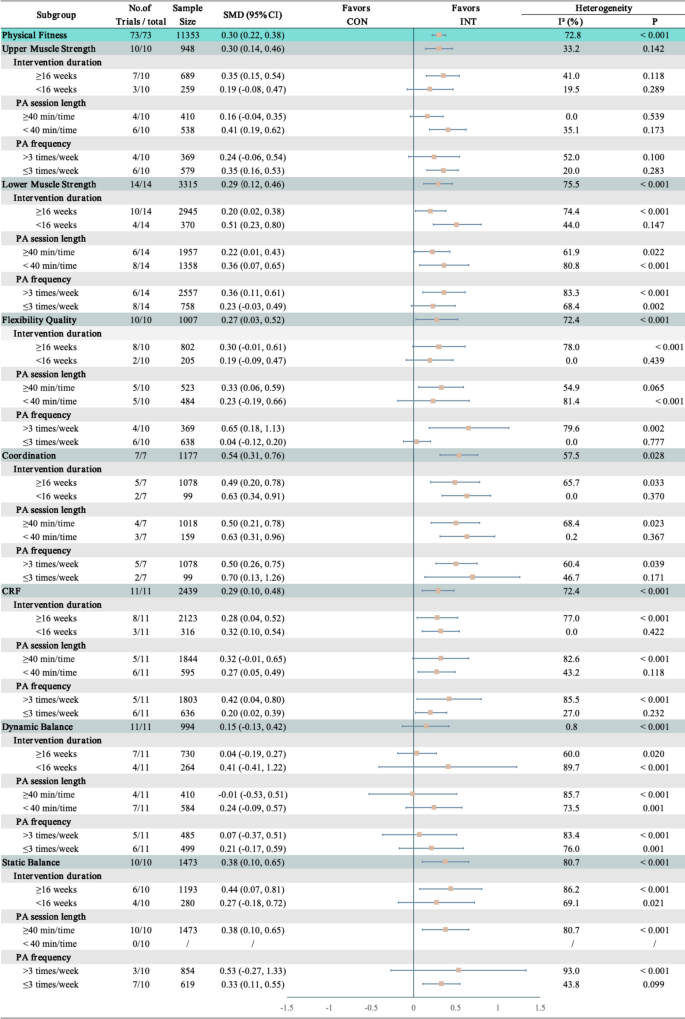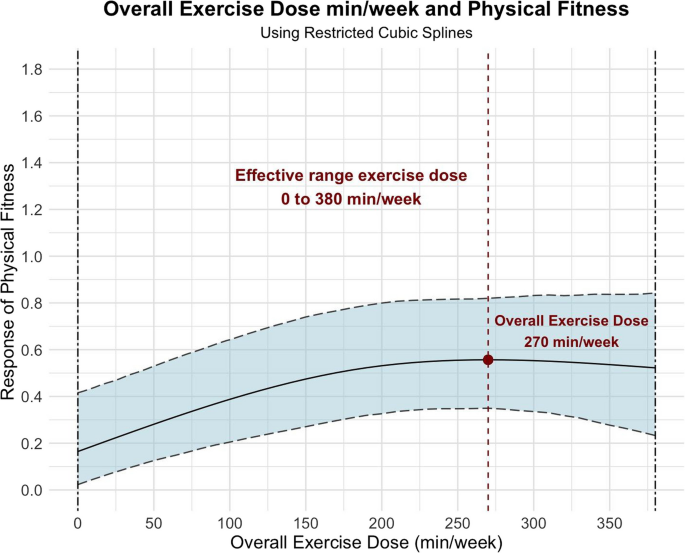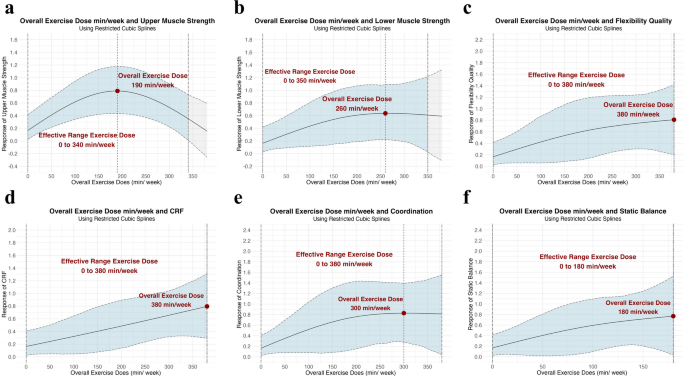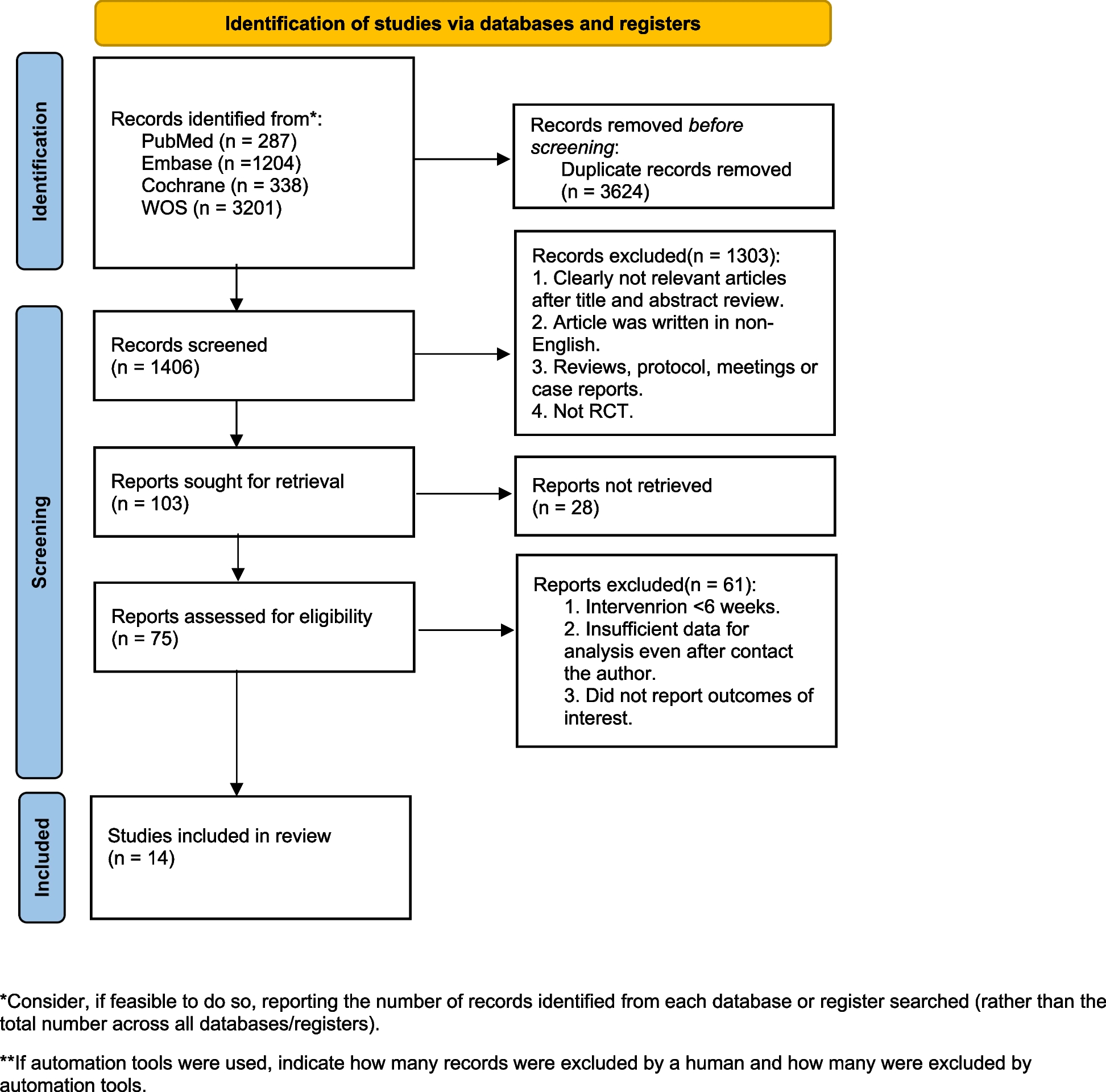Introduction
Diabetes is a metabolic disorder, and epidemiological studies indicate that the prevalence of diabetes is increasing annually. By 2045, global projections estimate 783.2 million individuals will live with diabetes.1 Individuals with diabetes frequently develop macrovascular and microvascular pathologies, which give rise to complications that compromise quality of life and elevate mortality risk. These complications encompass cardiovascular disease, diabetic nephropathy, diabetic retinopathy, and diabetic neuropathy. The core pathological pathway of diabetes mellitus involves absolute insulin deficiency (secondary to autoimmune destruction of pancreatic β-cells) or relative insulin insufficiency (attributed to insulin resistance), which induces impaired glucose uptake, utilization, and storage, thereby leading to chronic hyperglycemia and metabolic disturbances. As the central hub of cellular energy metabolism, mitochondrial dysfunction is closely linked to metabolic diseases. By regulating key processes including glucose oxidation, energy production, and insulin sensitivity, mitochondria are deeply involved in the pathological progression of diabetes, serving as a critical target for elucidating the mechanisms underlying its metabolic derangements. Emerging evidence highlights the critical role of mitochondrial function in the pathogenesis and progression of diabetic complications. Specifically, mitochondrial dynamics and autophagy have become central research focuses in elucidating the mechanisms underlying diabetes-associated tissue injury. Currently, there are drug studies targeting mitochondrial dynamics and autophagy, such as mitochondrial fission inhibitors and autophagy inducers.
Mitochondria are dynamic organelles that continuously undergo fusion and fission to adapt to cellular metabolic demands and environmental changes.2 Mitochondrial fusion is mediated by key regulatory proteins, such as mitofusin 1 (MFN1), mitofusin 2 (MFN2), and optic atrophy 1 (OPA1).3,4 During fusion, mitochondria exchange mitochondrial genomic material, proteins, and metabolites, facilitating cellular adaptive responses under stress and optimizing mitochondrial function. In contrast, mitochondrial fission is regulated by dynamin-related protein 1 (DRP1), fission protein 1 (FIS1), and mitochondrial fission factor (MFF).5 Fission promotes the biogenesis of new mitochondria and the elimination of damaged organelles, thereby safeguarding cellular homeostasis. The equilibrium between mitochondrial fusion and fission is essential for cellular survival and function, whereas disruptions in this balance can induce cell death and pathological conditions.6
Mitophagy is a selective form of autophagy responsible for the removal of damaged or redundant mitochondria, thereby maintaining mitochondrial quality and quantity homeostasis within the cell.7 The molecular mechanisms of mitophagy are broadly categorized into two primary pathways: ubiquitin-dependent and ubiquitin-independent pathways. Among these, the PTEN-induced kinase 1 (PINK1)-Parkin (E3 ubiquitin ligase) pathway represents the best-characterized ubiquitin-dependent signaling cascade in mitophagy.8 Mitophagy is a highly intricate and finely regulated biological process, and in-depth investigation of its mechanisms may provide new avenues for disease diagnosis and therapeutic interventions.9
Accumulating evidence indicates that MFN1, MFN2, and Parkin play key roles in both mitochondrial dynamics and mitophagy, establishing a functional link between these two processes.10–12 This review focuses on summarizing the roles of mitochondrial dynamics and mitophagy in diabetic complications, elucidating their specific mechanisms, and discussing potential strategies for restoring mitochondrial function to mitigate the impact of diabetic complications. These insights may provide valuable references for further understanding the pathogenesis of diabetic complications and identifying novel therapeutic targets.
Mitochondrial Dynamics, Mitophagy and Diabetic Cardiomyopathy
Diabetic cardiomyopathy (DCM) is a diabetes-related myocardial disorder characterized by cardiac structural and functional alterations independent of other established cardiovascular risk factors. Without intervention, DCM can progress to heart failure, arrhythmias, cardiogenic shock, and sudden cardiac death.13 In acute heart failure populations, the estimated prevalence of DCM is 1.6%.14 The pathogenesis of DCM is multifactorial, encompassing hyperglycemia, mitochondrial dysfunction, apoptosis, fibrosis, metabolic disorders, inflammatory responses, and the accumulation of advanced glycation end products (AGEs).15,16 Hyperglycemia induces oxidative stress, resulting in excessive reactive oxygen species (ROS) production, which impairs mitochondrial function in cardiomyocytes and exacerbates metabolic dysregulation. Elevated oxidative stress directly disrupts mitochondrial dynamics, altering the balance between fusion and fission, which impairs myocardial energy supply and contributes to cardiac dysfunction.17,18 Mitochondrial dynamics and autophagy constitute the core components of the mitochondrial quality control system, tasked with eliminating damaged mitochondria, regulating mitochondrial morphology, and maintaining cardiac energy homeostasis.19 Thus, maintaining mitochondrial homeostasis is essential for preserving cardiac metabolic integrity and halting the progression of DCM.
Excessive nutrient consumption disrupts mitochondrial fusion, fission, and autophagy processes in cardiomyocytes, thereby compromising mitochondrial homeostasis and cardiac function.20 In DCM, diminished mitochondrial fusion capacity, coupled with either excessive or inadequate mitochondrial fission, leads to a deterioration of mitochondrial quality, causing an imbalance in the number and function of mitochondria within cardiomyocytes. Under hyperglycemic conditions, DRP1 orchestrates mitochondrial fission in rat cardiomyocytes, which promotes the overproduction of ROS. Tetracycline has been demonstrated to induce the upregulation of MFN2, thus maintaining mitochondrial function.21 Similarly, in obese mice with DCM, DRP1 expression is significantly increased, while the levels of MFN1 and MFN2 are substantially decreased.22 Studies have also demonstrated that prenatal exposure to a high-glucose and high-fat diet results in shorter and wider mitochondria in neonatal rat cardiomyocytes, which subsequently impairs mitochondrial function.23 Additionally, post-translational modifications are pivotal in regulating proteins associated with mitochondrial dynamics. Hyperglycemia enhances O-linked N-acetylglucosamine (O-GlcNAc) glycosylation of OPA1, exacerbating mitochondrial dysfunction.24 DRP1 undergoes O-GlcNAc modification at threonine residues 585 and 586, which elevates the level of its GTP-bound active form. This modification facilitates the translocation of DRP1 from the cytoplasm to the mitochondria, inducing mitochondrial fission and decreasing mitochondrial membrane potential, thus further exacerbating mitochondrial dysfunction in DCM.25
Mitophagy exerts a pivotal function in cardiac development and maturation.26 Impaired mitophagy leads to mitochondrial dysfunction and lipid accumulation, exacerbating the progression of DCM. Accumulating evidence indicates that the loss of Parkin inhibits mitophagy,27 leading to enhanced lipid accumulation and deteriorated diastolic dysfunction. Conversely, the activation of mitophagy mitigates mitochondrial dysfunction, diminishes lipid accumulation, and improves diastolic function.28 FUN14 domain-containing protein 1 (FUNDC1) serves as a mitophagy receptor, interacting with microtubule-associated protein 1 light chain 3 (LC3) to initiate mitophagy in mammalian cells. The interaction among FUNDC1, DRP1, and OPA1 contributes to the regulation of mitochondrial fission, fusion, and mitophagy, thus maintaining mitochondrial quality control (Figure 1).29 Notably, emerging research has demonstrated that downregulating FUNDC1 expression alleviates mitochondrial calcium overload, ultimately improving DCM outcomes.30 Overall, a more profound understanding of mitochondrial dynamics and mitophagy mechanisms may lay the foundation for more efficacious therapeutic strategies and drug development for DCM in the future (Table 1).
|
Table 1 Comparison of the Roles of Key Molecules Regulating Mitochondrial Function in Diabetes-Related Complications
|
 |
Figure 1 The role and mechanism of mitochondrial dynamics and autophagy in diabetic complications, as well as related potential therapeutic targets.
Abbreviations: MFN1, mitofusin 1; MFN2, mitofusin 2; OPA1, optic atrophy 1; DRP1, dynamin-related protein 1; FIS1, fission protein 1; MFF, mitochondrial fission factor; PINK1, PTEN-induced kinase 1; DCM, diabetic cardiomyopathy; AGEs, advanced glycation end products; ROS, reactive oxygen species; O-GlcNAc, O-linked N-acetylglucosamine; FUNDC1, FUN14 domain-containing protein 1; LC3, light chain 3; DN, diabetic nephropathy; CKD, chronic kidney disease; PKM2, pyruvate kinase M2; PACS-2, phosphofurin acidic cluster sorting protein 2; MAM, mitochondrial-associated membrane; FOXO1, fork head box protein O1; PGRN, progranulin; mtDNA, mitochondrial DNA; DPN, diabetic peripheral neuropathy; TNF-α, tumor necrosis factor-α; IL-1, interleukin-1; IL-6, interleukin-6; Mul1, mitochondrial ubiquitin ligase 1; ER, endoplasmic reticulum; DR, diabetic retinopathy; NGR1, notoginsenoside R1; TXNIP, thioredoxin-interacting protein; Sirt3, sirtuin 3; LRP6, low density lipoprotein receptor – related protein 6; SGLT-2, sodium-glucose cotransporter-2; TCM, traditional Chinese medicine; TLN, tangluoning; PGC-1α, peroxisome proliferator-activated receptor gamma coactivator-1α; KD, ketogenic diet; Arfip2, ADP-Ribosylation Factor-Interacting Protein 2; PARP1, poly (ADP-ribose) polymerase 1; SGLT-2, sodium-glucose cotransporter-2; HIF-1α, Hypoxia-inducible factor-1α; JCYSTL, Jin-Chan-Yi-Shen Tong-Luo formula; SBN, Silybin; PCN, Piceatannol.
|
Mitochondrial Dynamics, Mitophagy and Diabetic Nephropathy
Diabetic nephropathy (DN) is one of the major microvascular complications of diabetes and a leading cause of chronic kidney disease (CKD) and end-stage renal disease, affecting approximately 700 million people worldwide.44 The pathogenesis of DN is multifactorial, encompassing metabolic derangements, hemodynamic changes, immune-inflammatory responses, cellular and molecular mechanisms, and genetic susceptibility.45,46 Under hyperglycemic conditions, excessive generation of ROS and the accumulation of AGEs induce cellular dysfunction and renal cell injury.46 Moreover, diabetes is frequently associated with hypertension, which exacerbates glomerular hyperfiltration, leading to glomerular hypertrophy, tubulointerstitial fibrosis, ultimately impairing renal function.46
Mitochondrial fission is intricately linked to the pathogenesis of DN. In diabetic mice, podocyte-specific deletion of DRP1 diminishes proteinuria, attenuates mesangial matrix expansion, and maintains podocyte morphology. Evidence from both in vivo and in vitro models indicates that DRP1 inhibition enhances mitochondrial adaptability in podocytes, mitigates excessive mitochondrial fission, and retards DN progression, thereby improving renal injury in diabetic mice.47 Pyruvate kinase M2 (PKM2) is a key regulator of podocyte development and promotes OPA1 expression to maintain mitochondrial stability (Figure 1).33,48 Additionally, the overexpression of phosphofurin acidic cluster sorting protein 2 (PACS-2) has been shown to inhibit DRP1 mitochondrial recruitment, reducing high glucose-induced mitochondrial hyperfission. This restoration of mitochondrial-associated membrane (MAM) integrity enhances mitophagy, as demonstrated in the renal tubules of diabetic mice and in PACS-2-overexpressing HK-2 cells. These changes are closely associated with alterations in mitochondrial dynamics and mitophagy-related proteins, including DRP1 and Beclin-1.35,49
Preclinical evidence demonstrates that suppressing mitophagy in podocytes drives the progression of DN.50 The progression of DN is associated with a gradual decline in Parkin expression in renal tubular epithelial cells of diabetic patients, whereas Parkin overexpression has been found to alleviate inflammation and improve renal function in STZ-induced diabetic mice.51 In both Arfip2-knockout human podocytes and Arfip2-knockout combined with STZ-induced diabetic mouse models, Arfip2 deficiency exacerbates autophagic dysfunction in mice, leading to podocyte foot process effacement, histopathological changes, and early albuminuria, while in human podocytes, it disrupts ATG9A trafficking and the PINK1/Parkin pathway, resulting in impaired mitochondrial fission and reduced mitophagy; thus, Arfip2 may represent a novel regulator of podocyte autophagy and mitochondrial homeostasis.42 Fork head box protein O1 (FOXO1) transcriptionally activates PINK1, leading to the upregulation of Parkin expression and the initiation of mitophagy. Activation of FOXO1 has been shown to mitigate diabetes-induced podocyte injury in renal tubules and protect kidney function. Additionally, progranulin (PGRN), a secretory glycoprotein precursor, enhances mitophagy by promoting PINK1 and Parkin expression, thereby slowing the progression of DN. Moreover, DN patients display reduced mitochondrial DNA (mtDNA) content, leading to impaired energy metabolism and metabolic inflexibility, which further exacerbates mitochondrial dysfunction and renal pathology.52 MtDNA mutations compromise mitophagy efficiency, as mitochondria with mtDNA mutations can evade mitophagic clearance.53 The cooperative interaction among FOXO1, Arfip2, PGRN, PINK1, and Parkin is essential for preserving podocyte integrity and represents a promising molecular target for DN therapy (Table 1).39,54,55
Elucidating the mechanisms of mitochondrial dynamics and mitophagy, along with identifying key molecular targets, could pave the way for innovative therapeutic strategies in the management of DN.
Mitochondrial Dynamics, Mitophagy and Diabetic Peripheral Neuropathy
Diabetic peripheral neuropathy (DPN) is one of the most common chronic complications of diabetes, typically manifesting as symmetrical pain and sensory abnormalities in the lower limbs. The pathogenesis of DPN is closely associated with hyperglycemia, dyslipidemia, and insulin resistance.56 Hyperglycemia-induced metabolic disorders lead to elevated ROS levels, resulting in oxidative stress that damages neuronal cell membranes and intracellular molecules, ultimately causing neuronal injury.57 Moreover, hyperglycemia triggers an inflammatory response, increasing the levels of pro-inflammatory cytokines such as tumor necrosis factor-α (TNF-α), interleukin-1 (IL-1), and interleukin-6 (IL-6). This inflammatory milieu exacerbates neuronal dysfunction and promotes apoptotic cell death, further deteriorating neural integrity in DPN.58
Mitochondria play a crucial role in the pathophysiology of DPN. Mitochondrial dysfunction in DPN is characterized by excessive ROS production, calcium homeostasis imbalance, decreased mitochondrial membrane potential, ATP depletion, and subsequent impairments in axonal transport or increased apoptotic factors.59 These diabetes-induced structural and functional mitochondrial alterations directly compromise neuronal energy metabolism and metabolic equilibrium, thereby exacerbating neuronal dysfunction in DPN.60 Mitochondrial dynamics are essential for synaptic function, and the loss of MFN2 impairs axonal mitochondrial transport, disrupting energy supply to neurons and exacerbating metabolic deficits.31 Furthermore, mitochondrial dynamics are closely linked to the PKA/AKAP1 signaling pathway. PKA-mediated phosphorylation regulates mitochondrial morphology by modulating DRP1, a process crucial for maintaining neuronal structure and function. Excessive phosphorylation of DRP1 leads to excessive mitochondrial fission, leading to compromised energy metabolism and neuronal structural instability.36,61 Given these findings, targeting mitochondrial dynamics may represent a promising therapeutic strategy for DPN (Table 1).
Moreover, mitochondrial dysfunction augments neuronal energy demands, thereby exacerbating synaptic impairment and neurological dysfunction. Within this pathological context, mitophagy functions as a selective quality-control mechanism, critically mitigating neuronal injury and promoting neuronal survival. Neurons require a continuous supply of energy to maintain synaptic transmission and long-distance axonal transport. Insufficient autophagosome load leads to the release of large amounts of ROS from damaged mitochondria, resulting in DNA fragmentation and protein misfolding. However, persistent hyperglycemia may cause the autophagosome load to exceed the normal threshold, leading to reduced autophagic efficiency and accumulation of autophagosomes.62,63 Mitochondrial ubiquitin ligase 1 (Mul1) suppresses Parkin-mediated mitophagy in mature neurons by maintaining the contact sites between the endoplasmic reticulum (ER) and mitochondria. Experimental evidence indicates that Mul1 deficiency upregulates MFN2 activity, inducing excessive mitochondrial fusion, and functions as an antagonist of ER-mitochondrial tethering, thereby decreasing ER-mitochondrial interactions. The diminished ER-mitochondria contact results in increased cytosolic calcium ion concentration, which activates calcineurin, subsequently triggering DRP1-dependent mitochondrial fission and mitophagy.64 Studies have shown that in db/db mouse models, poly(ADP-ribose) polymerase 1 (PARP1) induces peripheral nerve injury by inhibiting mitophagy in dorsal root ganglion neurons, whereas administration of PARP1 inhibitors ameliorates such nerve injury symptoms.40 Chronic dysregulation of calcium homeostasis may impair the balance between mitochondrial fission and fusion, resulting in decreased autophagic efficiency. Sustained hypercalcemia in neurons can inhibit mitochondrial mobility and impede the docking of autophagosomes with lysosomes.65 Furthermore, mitophagy facilitates the removal of excessive ROS and damaged mitochondria, thereby reducing oxidative stress, protecting neurons from damage, and extending their lifespan.66 Thus, modulating the interplay between MFN2, DRP1, and Parkin not only optimizes mitochondrial dynamics but also fine-tunes mitophagy, additionally, targeting such mechanisms as mitochondrial autophagic flux and calcium dynamics may represent a novel therapeutic strategy for DPN. (Figure 1).
Mitochondrial Dynamics, Mitophagy and Diabetic Retinopathy
Diabetic retinopathy (DR) is a common microvascular complication of diabetes, characterized by chronic and progressive retinal microvascular leakage and occlusion, leading to a series of fundus pathologies that result in visual impairment and even blindness. According to statistical data from 2020, approximately 1.07 million individuals worldwide have experienced blindness due to DR, while about 3.28 million have suffered from vision impairment caused by this condition.67 The pathogenesis of DR is multifactorial, encompassing hyperglycemia-driven metabolic derangements, inflammatory cascades, mitochondrial dysfunction, microvascular anomalies, pathological neovascularization, and neurodegenerative processes.68
Hyperglycemia-induced inflammatory responses augment vascular permeability and retinal blood flow, ultimately culminating in apoptosis. Under hyperglycemic conditions, excessive generation of ROS inflicts damage on mitochondrial DNA, resulting in mitochondrial dysfunction and retinal impairment. Retinal ischemia and hypoxia exacerbate capillary endothelial cell injury, ultimately promoting neovascularization.69,70 In diabetic mice, the retinal expression of OPA1 is markedly decreased, resulting in mitochondrial swelling and localized constriction, thus facilitating mitochondrial fission. This phenomenon is associated with partial mitochondrial damage in the retinal capillaries of diabetic mice.34 In both in vivo and in vitro models of DR, overexpression of MFN2 in retinal endothelial cells has been demonstrated to safeguard against hyperglycemia-induced structural and functional mitochondrial damage, enhance mitochondrial DNA integrity and transcription, and mitigate the hyperglycemia-induced elevation in capillary cell apoptosis.32 In DR, the levels of MFN2 protein are decreased, whereas the levels of DRP1 are increased,37 resulting in augmented mitochondrial fission and compromised fusion. Excessive mitochondrial fragmentation initiates endothelial cell apoptosis, further exacerbating retinal vascular dysfunction.
Under high-glucose conditions, Parkin accumulates within the mitochondria of retinal cells, thereby inducing mitophagy. However, in the diabetic retina of db/db mice, the mitophagosome-to-mitochondria ratio is reduced, accompanied by increased oxidative stress, which may be mediated by alterations in mitophagy-related proteins such as PRKN and PINK1.71 Notably, notoginsenoside R1 (NGR1) has been demonstrated to augment PINK1-Parkin–dependent mitophagy, thereby alleviating retinal cell damage.41 Müller cells, which are the predominant type of glial cells in the retina, play a crucial role in maintaining retinal function and homeostasis.72 Neurovascular coupling represents a core mechanism that sustains normal neural function—particularly visual function—by regulating vascular activity to match the metabolic demands of neurons in the retina and brain. When retinal neuronal activity increases, insufficient vascular dilation leads to inadequate blood flow and oxygen supply, triggering local hypoxia and damaging mitochondria in retinal neurons and glial cells such as Müller cells. This not only exacerbates energy metabolism disorders but also impairs the regulatory capacity of neurovascular coupling.73,74 Mitochondria are key regulators of neurovascular coupling. Under diabetic conditions, mitochondrial dysfunction induces abnormal signal transmission between neurons and vascular endothelial cells: excessive production of mitochondrial ROS inhibits the bioavailability of nitric oxide, impairs vasodilation, and aggravates retinal ischemia and hypoxia. Additionally, mitochondrial damage activates inflammatory pathways, promotes macrophage polarization, and further disrupts the blood-retinal barrier. The interplay between inflammation and mitochondrial dysfunction accelerates the progression of DR.75–77 Hyperglycemia induces an upregulation of thioredoxin-interacting protein (TXNIP) levels, promotes mitochondrial fission, and enhances autophagic flux in Müller cells. Silencing of TXNIP decreases both mitochondrial fission and autophagy in these cells,78 indicating that targeting TXNIP may represent a potential therapeutic strategy for diabetes and its associated complications, including DR (Figure 1).38,43 Moreover, the mitochondrial deacetylase Sirtuin 3 (Sirt3) is capable of activating mitophagy via the FOXO3a/PINK1-Parkin pathway, thereby safeguarding retinal pigment epithelial cells.79 The interaction between mitochondrial dynamics and autophagy exerts a significantly influence on retinal cell fate and overall health and function of the retina. The dynamic balance between these processes is essential for maintaining cellular homeostasis. Modulating the PINK1/Parkin pathway or inhibiting mitochondrial fission proteins, including DRP1, can effectively alleviate retinal cell damage and preserve visual function, presenting novel therapeutic approaches for DR. As research progresses, these insights could offer valuable guidance for the development of pharmacological interventions aimed at treating DR (Table 1).
Application Prospects of Mitochondrial-Related Intervention Strategies in Diabetic Complications
Mitochondria represent one of the most crucial organelles for maintaining cellular homeostasis. The interaction between mitochondrial dynamics and autophagy is fundamental for preserving organ function and regulating physiological processes. A more profound comprehension of these mechanisms may expedite the development of novel therapeutic strategies. Mitochondrial fission inhibitors, including Mdivi-1,80 P110, and DRP1i27,81 decrease DRP1 levels, inhibit mitochondrial fragmentation, and enhance mitochondrial fusion. Mdivi-1, a quinazolinone derivative, has been demonstrated to attenuate the activation of DRP1 signaling in vivo studies of end-stage DCM in mice (Figure 1). Specifically, Mdivi-1 alleviates autophagy inhibition and fatty acid metabolism dysregulation resulting from low density lipoprotein receptor – related protein 6 (LRP6) deficiency, ultimately ameliorating cardiac dysfunction.82 Melatonin improves mitochondrial function and cardiac function by inhibiting SIRT1/PGC-1α-dependent mitochondrial fission, which reduces the expression level of Drp1, thereby suppressing mitochondrial remodeling and oxidative stress, decreasing cardiomyocyte apoptosis.83 Sodium-glucose cotransporter-2 (SGLT-2) inhibitors have demonstrated the ability to prevent mitochondrial swelling, enhance mitochondrial repair and regeneration, and ameliorate mitochondrial dysfunction by inhibiting aberrant mitochondrial fission via the AMPK signaling pathway.84 Moreover, autophagy inducers including rapamycin have been proposed to alleviate diabetes-associated renal injury by promoting autophagic activation.48 As a deacetylase 1 activator, silybin (SBN) can ameliorate high glucose -induced sciatic nerve injury and oxidative damage in mouse neuroblastoma cells (N2A) and STZ-induced Sprague-Dawley rats, and exerts neuroprotective effects by enhancing mitophagy.85 Liraglutide prevents DR by inhibiting the PINK1/Parkin pathway, thereby reducing mitophagy.86
Certain bioactive compounds derived from traditional Chinese medicine (TCM), including punicalagin and paeonol, have been demonstrated to attenuate oxidative stress by modulating mitochondrial fusion, thereby ameliorating DCM.87 Moreover, ginseng and its bioactive extracts exhibit protective effects against DCM by improving mitochondrial dysfunction.88 Berberine, a quaternary ammonium alkaloid extracted from Coptis chinensis (Huanglian) and Phellodendron amurense (Huangbai), enhances mitochondrial energy homeostasis by activating the peroxisome proliferator-activated receptor gamma coactivator-1α (PGC-1α) signaling pathway.89 Furthermore, berberine has been demonstrated to mitigate high-glucose-induced mitochondrial fission and fusion imbalance, as well as impairments in mitotic progression. It exerts protective effects against cardiomyocyte damage by promoting AMPK-dependent mitophagy activation, leading to reduced mitochondrial abundance and cellular injury.90 In high glucose/hypoxia-induced HK-2 cells and unilateral nephrectomy combined with STZ-induced diabetic kidney disease rat models, Jin-Chan-Yi-Shen Tong-Luo formula (JCYSTL) protects renal tubules against mitochondrial dysfunction and apoptosis by stabilizing HIF-1α to activate PINK1/Parkin-mediated mitophagy.91 Tangluoning (TLN), a TCM formulation, has been studied for its efficacy in preventing and treating DPN. In DPN rat models, TLN enhances mitochondrial function by inhibiting DRP1 expression and phosphorylation, thereby suppressing mitochondrial fission and upregulating fusion proteins MFN1, MFN2, and OPA1.92 Piceatannol (PCN), a SIRT1 activator, exerts neuroprotective effects by promoting mitobiogenesis and mitophagy through the SIRT1-PGC-1α-NRF2-TFAM and SIRT1-PINK1-Parkin axes.93 TCM offers significant promise in modulating mitochondrial function and autophagy, presenting novel therapeutic strategies for diabetic complications. TCM-based interventions targeting the PINK1/Parkin-mediated mitophagy pathway may exert neuroprotective effects in DN. Furthermore, the regulation of mitochondrial dynamics proteins, including MFN1, MFN2, and DRP1, may help restore mitochondrial homeostasis, presenting novel therapeutic insights for managing diabetes-related complications.94
The ketogenic diet (KD) is a therapeutic dietary approach that influences mitochondrial dynamics by modulating the AMPK/mTOR signaling pathway.95 Regular physical exercise and a balanced dietary regimen can reduce excessive apoptosis, promote cellular health, and enhance mitochondrial function and autophagy (Table 2).96,97
 |
Table 2 Summary of Bioactive Compounds Targeting Mitochondrial Dynamics and Autophagy
|
Diagnostic Monitoring and Precision Medicine Technologies for Diabetes Mellitus and Mitochondrial Dysfunction
Accurate diagnosis of diabetes mellitus and monitoring of mitochondrial dysfunction are crucial for formulating effective management and intervention strategies. Mitochondrial dysfunction can be diagnosed and identified through metabolomics, proteomics analyses, and imaging techniques, while artificial intelligence has also shown great potential in processing diabetes-related multi-omics data, including genomics, proteomics, and metabolomics.
Metabolomics analysis can characterize metabolic pathways and identify disease-related biomarkers by comprehensively detecting small-molecule metabolites in biological samples such as blood, urine, and tissues. This analysis can reveal systemic metabolic abnormalities and mitochondrial dysfunction, facilitating early disease detection and intervention. Among them, targeted metabolomics and flux analysis techniques can deeply dissect the mechanisms underlying mitochondrial metabolism and energy homeostasis, providing support for the development of personalized therapeutic approaches based on individual metabolic characteristics.98,99
Imaging techniques such as positron emission tomography (PET), magnetic resonance imaging (MRI), and near-infrared spectroscopy (NIRS) provide non-invasive diagnostic approaches for evaluating mitochondrial dysfunction in diabetes mellitus by visualizing in vivo mitochondrial function and tissue metabolism. Specifically, PET imaging uses radiolabeled tracers like [18F] fluorodeoxyglucose (FDG) and [11C] acetate to assess glucose uptake and oxidative metabolism in tissues, thereby facilitating in-depth understanding of mitochondrial function and energy metabolic status in diabetic tissues. MRI techniques, including magnetic resonance spectroscopy and diffusion-weighted imaging, can quantify tissue metabolites and water diffusion properties, providing information related to mitochondrial function and tissue microstructure.100,101
Data-driven precision medicine provides innovative approaches for the prediction and management of type 2 diabetes mellitus (T2DM). With the advancement of big data and artificial intelligence technologies, the medical field can more accurately identify and predict T2DM risks. By integrating multi-dimensional data including genomics, metabolomics, lifestyle, and environment, artificial intelligence can not only analyze an individual’s genetic susceptibility and potential metabolic disorders but also comprehensively and dynamically monitor patients’ health status, thereby enabling early warning and personalized treatment of the disease.102
Conclusion
Mitochondrial dynamics and autophagy play critical roles in the pathogenesis and progression of diabetic complications. Mitochondrial dynamic imbalance, characterized by aberrant mitochondrial fusion and fission, results in diminished bioenergetic capacity, excessive ROS generation, and compromised mitophagy. These pathological changes are closely associated with the development of chronic diabetic complications, and their regulatory processes are complex and sophisticated, involving interactions among multiple signaling pathways and key molecules. However, due to the unclear regulatory mechanisms of these molecules, it is difficult to precisely target specific targets in mitochondrial dynamics and autophagy in practice, and single interventions fail to achieve satisfactory therapeutic efficacy, thus requiring the combined application of multiple approaches. With the rapid advancement of science and technology, combining omics technologies, artificial intelligence-based prediction, and novel imaging methods in the future is expected to improve diabetic complications through mitochondrial-targeted therapy. This review synthesizes the roles and molecular mechanisms of mitochondrial dynamics and autophagy in diabetic complications (Figure 1). Despite significant progress in recent studies, several unresolved issues remain, including unclear cross-talk between regulatory pathways, undefined epigenetic regulatory mechanisms, lack of systematic investigation into cell-type-specific differences, and insufficient research on the impacts of environmental and genetic factors. Future investigations should further clarify the precise regulatory mechanisms of mitochondrial dynamics and autophagy, while exploring their therapeutic potential for diabetic complications.
Acknowledgments
This work was supported by the “National Clinical Key Specialty Cultivation Project Platform for Endocrinology” (2024NMKFKT-01), and the “Yunnan Province Prosper Yunnan Talent Support Program” (YNWR-QNBJ-2018-070), and the “Reserve talents of young and middle-aged academic and technical leaders in Yunnan Province” (2018HB050).
Disclosure
The author(s) report no conflicts of interest in this work.
References
1. Sun H, Saeedi P, Karuranga S, et al. IDF diabetes atlas: global, regional and country-level diabetes prevalence estimates for 2021 and projections for 2045. Diabet Res Clin Pract. 2022;183:109119. doi:10.1016/j.diabres.2021.109119
2. El-Hattab AW, Scaglia F. Mitochondrial cytopathies. Cell Calcium. 2016;60(3):199–206. doi:10.1016/j.ceca.2016.03.003
3. Chen H, Detmer SA, Ewald AJ, Griffin EE, Fraser SE, Chan DC. Mitofusins Mfn1 and Mfn2 coordinately regulate mitochondrial fusion and are essential for embryonic development. J Cell Biol. 2003;160(2):189–200. doi:10.1083/jcb.200211046
4. Belenguer P, Pellegrini L. The dynamin GTPase OPA1: more than mitochondria? BBA. 2013;1833(1):176–183. doi:10.1016/j.bbamcr.2012.08.004
5. Tilokani L, Nagashima S, Paupe V, Prudent J. Mitochondrial dynamics: overview of molecular mechanisms. Essays Biochemist. 2018;62(3):341–360. doi:10.1042/EBC20170104
6. Al Ojaimi M, Salah A, El-Hattab AW. Mitochondrial fission and fusion: molecular mechanisms, biological functions, and related disorders. Membranes. 2022;12(9):893. doi:10.3390/membranes12090893
7. Lu Y, Li Z, Zhang S, Zhang T, Liu Y, Zhang L. Cellular mitophagy: mechanism, roles in diseases and small molecule pharmacological regulation. Theranostics. 2023;13(2):736–766. doi:10.7150/thno.79876
8. Li S, Zhang J, Liu C, et al. The role of mitophagy in regulating cell death. Oxid Med Cell Longev. 2021;2021:6617256. doi:10.1155/2021/6617256
9. Wang H, Luo W, Chen H, Cai Z, Xu G. Mitochondrial dynamics and mitochondrial autophagy: molecular structure, orchestrating mechanism and related disorders. Mitochondrion. 2024;75:101847. doi:10.1016/j.mito.2024.101847
10. Tanaka A, Cleland MM, Xu S, et al. Proteasome and p97 mediate mitophagy and degradation of mitofusins induced by parkin. J Cell Biol. 2010;191(7):1367–1380. doi:10.1083/jcb.201007013
11. Shirihai OS, Song M, Dorn GW. How mitochondrial dynamism orchestrates mitophagy. Circ Res. 2015;116(11):1835–1849. doi:10.1161/CIRCRESAHA.116.306374
12. Kurihara Y, Kanki T, Aoki Y, et al. Mitophagy plays an essential role in reducing mitochondrial production of reactive oxygen species and mutation of mitochondrial DNA by maintaining mitochondrial quantity and quality in yeast. J Biol Chem. 2012;287(5):3265–3272. doi:10.1074/jbc.M111.280156
13. Yokota S, Tanaka H, Mochizuki Y, et al. Association of glycemic variability with left ventricular diastolic function in type 2 diabetes mellitus. Cardiovasc Diabet. 2019;18(1):166. doi:10.1186/s12933-019-0971-5
14. Matsushita K, Harada K, Kohno T, et al. Prevalence and clinical characteristics of diabetic cardiomyopathy in patients with acute heart failure. Nutr Metab Cardiovasc Dis. 2024;34(5):1325–1333. doi:10.1016/j.numecd.2023.12.013
15. Tan Y, Zhang Z, Zheng C, Wintergerst KA, Keller BB, Cai L. Mechanisms of diabetic cardiomyopathy and potential therapeutic strategies: preclinical and clinical evidence. Nat Rev Cardiol. 2020;17(9):585–607. doi:10.1038/s41569-020-0339-2
16. Miki T, Yuda S, Kouzu H, Miura T. Diabetic cardiomyopathy: pathophysiology and clinical features. Heart Failure Rev. 2013;18(2):149–166. doi:10.1007/s10741-012-9313-3
17. Gollmer J, Zirlik A, Bugger H. Mitochondrial mechanisms in diabetic cardiomyopathy. Diabet Metabol J. 2020;44(1):33–53. doi:10.4093/dmj.2019.0185
18. Pappachan JM, Varughese GI, Sriraman R, Arunagirinathan G. Diabetic cardiomyopathy: pathophysiology, diagnostic evaluation and management. World Journal of Diabetes. 2013;4(5):177–189. doi:10.4239/wjd.v4.i5.177
19. Poznyak AV, Ivanova EA, Sobenin IA, Yet SF, Orekhov AN. The role of mitochondria in cardiovascular diseases. Biology. 2020;9(6):137. doi:10.3390/biology9060137
20. Liesa M, Shirihai OS. Mitochondrial dynamics in the regulation of nutrient utilization and energy expenditure. Cell Metab. 2013;17(4):491–506. doi:10.1016/j.cmet.2013.03.002
21. Yu T, Robotham JL, Yoon Y. Increased production of reactive oxygen species in hyperglycemic conditions requires dynamic change of mitochondrial morphology. Proc Natl Acad Sci USA. 2006;103(8):2653–2658. doi:10.1073/pnas.0511154103
22. Hu L, Ding M, Tang D, et al. Targeting mitochondrial dynamics by regulating Mfn2 for therapeutic intervention in diabetic cardiomyopathy. Theranostics. 2019;9(13):3687–3706. doi:10.7150/thno.33684
23. Larsen TD, Sabey KH, Knutson AJ, et al. Diabetic pregnancy and maternal high-fat diet impair mitochondrial dynamism in the developing fetal rat heart by sex-specific mechanisms. Int J Mol Sci. 2019;20(12):3090. doi:10.3390/ijms20123090
24. Makino A, Suarez J, Gawlowski T, et al. Regulation of mitochondrial morphology and function by O-GlcNAcylation in neonatal cardiac myocytes. Am J Physiol Regulatory Integr Comp Physiol. 2011;300(6):R1296–302. doi:10.1152/ajpregu.00437.2010
25. Gawlowski T, Suarez J, Scott B, et al. Modulation of dynamin-related protein 1 (DRP1) function by increased O-linked-β-N-acetylglucosamine modification (O-GlcNAc) in cardiac myocytes. J Biol Chem. 2012;287(35):30024–30034. doi:10.1074/jbc.M112.390682
26. Lazarou M, Sliter DA, Kane LA, et al. The ubiquitin kinase PINK1 recruits autophagy receptors to induce mitophagy. Nature. 2015;524(7565):309–314. doi:10.1038/nature14893
27. Qiao H, Ren H, Du H, Zhang M, Xiong X, Lv R. [Retracted] Liraglutide repairs the infarcted heart: the role of the SIRT1/parkin/mitophagy pathway. Mol Med Rep. 2024;29(5):68. doi:10.3892/mmr.2024.13192
28. Tong M, Saito T, Zhai P, et al. Mitophagy is essential for maintaining cardiac function during high fat diet-induced diabetic cardiomyopathy. Circ Res. 2019;124(9):1360–1371. doi:10.1161/CIRCRESAHA.118.314607
29. Chen M, Chen Z, Wang Y, et al. Mitophagy receptor FUNDC1 regulates mitochondrial dynamics and mitophagy. Autophagy. 2016;12(4):689–702. doi:10.1080/15548627.2016.1151580
30. Wu S, Lu Q, Ding Y, et al. Hyperglycemia-driven inhibition of amp-activated protein kinase α2 induces diabetic cardiomyopathy by promoting mitochondria-associated endoplasmic reticulum membranes in vivo. Circulation. 2019;139(16):1913–1936. doi:10.1161/CIRCULATIONAHA.118.033552
31. Misko A, Jiang S, Wegorzewska I, Milbrandt J, Baloh RH. Mitofusin 2 is necessary for transport of axonal mitochondria and interacts with the miro/milton complex. J Neurosci. 2010;30(12):4232–4240. doi:10.1523/JNEUROSCI.6248-09.2010
32. Duraisamy AJ, Mohammad G, Kowluru RA. Mitochondrial fusion and maintenance of mitochondrial homeostasis in diabetic retinopathy. Biochim Biophys Acta Mol Basis Dis. 2019;1865(6):1617–1626. doi:10.1016/j.bbadis.2019.03.013
33. Gong M, Guo Y, Dong H, et al. Modified Hu-lu-ba-wan protects diabetic glomerular podocytes via promoting PKM2-mediated mitochondrial dynamic homeostasis. Phytomedicine. 2024;123:155247. doi:10.1016/j.phymed.2023.155247
34. Kim D, Votruba M, Roy S. Opa1 deficiency promotes development of retinal vascular lesions in diabetic retinopathy. Int J Mol Sci. 2021;22(11):5928. doi:10.3390/ijms22115928
35. Li C, Li L, Yang M, et al. PACS-2 ameliorates tubular injury by facilitating endoplasmic reticulum-mitochondria contact and mitophagy in diabetic nephropathy. Diabetes. 2022;71(5):1034–1050. doi:10.2337/db21-0983
36. Dickey AS, Strack S. PKA/AKAP1 and PP2A/Bβ2 regulate neuronal morphogenesis via Drp1 phosphorylation and mitochondrial bioenergetics. J Neurosci. 2011;31(44):15716–15726. doi:10.1523/JNEUROSCI.3159-11.2011
37. Kim D, Sankaramoorthy A, Roy S. Downregulation of Drp1 and Fis1 inhibits mitochondrial fission and prevents high glucose-induced apoptosis in retinal endothelial cells. Cells. 2020;9(7):1662. doi:10.3390/cells9071662
38. Devi TS, Yumnamcha T, Yao F, Somayajulu M, Kowluru RA, Singh LP. TXNIP mediates high glucose-induced mitophagic flux and lysosome enlargement in human retinal pigment epithelial cells. Biology Open. 2019;8(4):bio038521. doi:10.1242/bio.038521
39. Li W, Du M, Wang Q, et al. FoxO1 promotes mitophagy in the podocytes of diabetic male mice via the PINK1/parkin pathway. Endocrinology. 2017;158(7):2155–2167. doi:10.1210/en.2016-1970
40. Yuan P, Song F, Zhu P, et al. Poly (ADP-ribose) polymerase 1-mediated defective mitophagy contributes to painful diabetic neuropathy in the db/db model. J Neurochemist. 2022;162(3):276–289. doi:10.1111/jnc.15606
41. Tien T, Zhang J, Muto T, Kim D, Sarthy VP, Roy S. High glucose induces mitochondrial dysfunction in retinal müller cells: implications for diabetic retinopathy. Invest Ophthalmol Visual Sci. 2017;58(7):2915–2921. doi:10.1167/iovs.16-21355
42. Guo H, Rogg M, Keller J, et al. ADP-ribosylation factor-interacting protein 2 acts as a novel regulator of mitophagy and autophagy in podocytes in diabetic nephropathy. Antioxidants. 2024;13(1):81. doi:10.3390/antiox13010081
43. Singh LP, Devi TS, Yumnamcha T. The role of txnip in mitophagy dysregulation and inflammasome activation in diabetic retinopathy: a new perspective. JOJ Ophthalmol. 2017;4(4):555643. doi:10.19080/JOJO.2017.04.555643
44. Ellen KH. The epidemiology of diabetic kidney disease. Article. Kidney Dial. 2022;2(3):433–442. doi:10.3390/kidneydial2030038
45. Raptis AE, Viberti G. Pathogenesis of diabetic nephropathy. Exp Clin Endocrinol Diabet. 2001;109 Suppl 2:S424–37.
46. Samsu N. Diabetic nephropathy: challenges in pathogenesis, diagnosis, and treatment. Biomed Res Int. 2021;2021:1497449. doi:10.1155/2021/1497449
47. Ayanga BA, Badal SS, Wang Y, et al. Dynamin-related protein 1 deficiency improves mitochondrial fitness and protects against progression of diabetic nephropathy. J Am Soc Nephrol. 2016;27(9):2733–2747. doi:10.1681/ASN.2015101096
48. Fan X, Yang M, Lang Y, et al. Mitochondrial metabolic reprogramming in diabetic kidney disease. Cell Death Dis. 2024;15(6):442. doi:10.1038/s41419-024-06833-0
49. Moulis M, Grousset E, Faccini J, Richetin K, Thomas G, Vindis C. The multifunctional sorting protein PACS-2 controls mitophagosome formation in human vascular smooth muscle cells through mitochondria-ER contact sites. Cells. 2019;8(6):638. doi:10.3390/cells8060638
50. Guo F, Wang W, Song Y, et al. LncRNA SNHG17 knockdown promotes parkin-dependent mitophagy and reduces apoptosis of podocytes through Mst1. Cell Cycle. 2020;19(16):1997–2006. doi:10.1080/15384101.2020.1783481
51. Chen K, Chen J, Wang L, et al. Parkin ubiquitinates GATA4 and attenuates the GATA4/GAS1 signaling and detrimental effects on diabetic nephropathy. FASEB J. 2020;34(7):8858–8875. doi:10.1096/fj.202000053R
52. Czajka A, Ajaz S, Gnudi L, et al. Altered mitochondrial function, mitochondrial dna and reduced metabolic flexibility in patients with diabetic nephropathy. EBioMedicine. 2015;2(6):499–512. doi:10.1016/j.ebiom.2015.04.002
53. Gilkerson RW, De Vries RL, Lebot P, et al. Mitochondrial autophagy in cells with mtDNA mutations results from synergistic loss of transmembrane potential and mTORC1 inhibition. Human Mol Genet. 2012;21(5):978–990. doi:10.1093/hmg/ddr529
54. Zhou D, Zhou M, Wang Z, et al. PGRN acts as a novel regulator of mitochondrial homeostasis by facilitating mitophagy and mitochondrial biogenesis to prevent podocyte injury in diabetic nephropathy. Cell Death Dis. 2019;10(7):524. doi:10.1038/s41419-019-1754-3
55. Zhang X, Feng J, Li X, et al. Mitophagy in diabetic kidney disease. Front Cell Develop Biol. 2021;9:778011. doi:10.3389/fcell.2021.778011
56. Pop-Busui R, Boulton AJ, Feldman EL, et al. Diabetic neuropathy: a position statement by the American Diabetes Association. Diabet Care. 2017;40(1):136–154. doi:10.2337/dc16-2042
57. Hamid HS, Mervak CM, Münch AE, et al. Hyperglycemia- and neuropathy-induced changes in mitochondria within sensory nerves. Ann Clin Transl Neurol. 2014;1(10):799–812. doi:10.1002/acn3.119
58. Chong ZZ, Menkes DL, Souayah N. Targeting neuroinflammation in distal symmetrical polyneuropathy in diabetes. Drug Discovery Today. 2024;29(8):104087. doi:10.1016/j.drudis.2024.104087
59. Hernández-Beltrán N, Moreno CB, Gutiérrez-álvarez AM. Contribution of mitochondria to pain in diabetic neuropathy. Endocrinologia y nutricion. 2013;60(1):25–32. doi:10.1016/j.endonu.2012.03.005
60. López-Doménech G, Kittler JT. Mitochondrial regulation of local supply of energy in neurons. Curr Opin Neurobiol. 2023;81:102747. doi:10.1016/j.conb.2023.102747
61. Vital A, Vital C. Mitochondria and peripheral neuropathies. J Neuropathol Exp Neurol. 2012;71(12):1036–1046. doi:10.1097/NEN.0b013e3182764d47
62. Parmar UM, Jalgaonkar MP, Kulkarni YA, Oza MJ. Autophagy-nutrient sensing pathways in diabetic complications. Pharmacol Res. 2022;184:106408. doi:10.1016/j.phrs.2022.106408
63. Miceli C, Leri M, Stefani M, Bucciantini M. Autophagy-related proteins: potential diagnostic and prognostic biomarkers of aging-related diseases. Ageing Res Rev. 2023;89:101967. doi:10.1016/j.arr.2023.101967
64. Puri R, Cheng XT, Lin MY, Huang N, Sheng ZH. Mul1 restrains Parkin-mediated mitophagy in mature neurons by maintaining ER-mitochondrial contacts. Nat Commun. 2019;10(1):3645. doi:10.1038/s41467-019-11636-5
65. Borbolis F, Ploumi C, Palikaras K. Calcium-mediated regulation of mitophagy: implications in neurodegenerative diseases. Npj Metabolic Health Dis. 2025;3(1):4. doi:10.1038/s44324-025-00049-2
66. Lou G, Palikaras K, Lautrup S, Scheibye-Knudsen M, Tavernarakis N, Fang EF. Mitophagy and neuroprotection. Trends Mol Med. 2020;26(1):8–20. doi:10.1016/j.molmed.2019.07.002
67. Curran K, Peto T, Jonas JB. Global estimates on the number of people blind or visually impaired by diabetic retinopathy: a meta-analysis from 2000 to 2020. Eye. 2024;38(11):2047–2057. doi:10.1038/s41433-024-03101-5
68. Wei L, Sun X, Fan C, Li R, Zhou S, Yu H. The pathophysiological mechanisms underlying diabetic retinopathy. Front Cell Develop Biol. 2022;10:963615. doi:10.3389/fcell.2022.963615
69. Lechner J, O’Leary OE, Stitt AW. The pathology associated with diabetic retinopathy. Vision Res. 2017;139:7–14. doi:10.1016/j.visres.2017.04.003
70. Madsen-Bouterse SA, Zhong Q, Mohammad G, Ho YS, Kowluru RA. Oxidative damage of mitochondrial DNA in diabetes and its protection by manganese superoxide dismutase. Free Rad Res. 2010;44(3):313–321. doi:10.3109/10715760903494168
71. Zhou P, Xie W, Meng X, et al. Notoginsenoside R1 ameliorates diabetic retinopathy through PINK1-dependent activation of mitophagy. Cells. 2019;8(3):213. doi:10.3390/cells8030213
72. Coughlin BA, Feenstra DJ, Mohr S. Müller cells and diabetic retinopathy. Vision Re. 2017;139:93–100. doi:10.1016/j.visres.2017.03.013
73. Fletcher EL, Dixon MA, Mills SA, Jobling AI. Anomalies in neurovascular coupling during early diabetes: a review. Clin Exp Ophthalmol. 2023;51(1):81–91. doi:10.1111/ceo.14190
74. Li Y, Liu Y, Liu S, et al. Diabetic vascular diseases: molecular mechanisms and therapeutic strategies. Signal Transduct Target Ther. 2023;8(1):152. doi:10.1038/s41392-023-01400-z
75. Liu W, Tong B, Xiong J, et al. Identification of macrophage polarisation and mitochondria-related biomarkers in diabetic retinopathy. J Transl Med. 2025;23(1):23. doi:10.1186/s12967-024-06038-1
76. Kowluru RA. Mitochondrial stability in diabetic retinopathy: lessons learned from epigenetics. Diabetes. 2019;68(2):241–247. doi:10.2337/dbi18-0016
77. Kowluru RA, Mohammad G. Epigenetics and mitochondrial stability in the metabolic memory phenomenon associated with continued progression of diabetic retinopathy. Sci Rep. 2020;10(1):6655. doi:10.1038/s41598-020-63527-1
78. Ao H, Li H, Zhao X, Liu B, Lu L. TXNIP positively regulates the autophagy and apoptosis in the rat müller cell of diabetic retinopathy. Life Sci. 2021;267:118988. doi:10.1016/j.lfs.2020.118988
79. Huang L, Yao T, Chen J, et al. Effect of Sirt3 on retinal pigment epithelial cells in high glucose through Foxo3a/ PINK1-Parkin pathway mediated mitophagy. Exp Eye Res. 2022;218:109015. doi:10.1016/j.exer.2022.109015
80. Maneechote C, Palee S, Kerdphoo S, Jaiwongkam T, Chattipakorn SC, Chattipakorn N. Differential temporal inhibition of mitochondrial fission by Mdivi-1 exerts effective cardioprotection in cardiac ischemia/reperfusion injury. Clin Sci. 2018;132(15):1669–1683. doi:10.1042/CS20180510
81. Rosdah AA, Abbott BM, Langendorf CG, et al. A novel small molecule inhibitor of human Drp1. Sci Rep. 2022;12(1):21531. doi:10.1038/s41598-022-25464-z
82. Chen Z, Li Y, Wang Y, et al. Cardiomyocyte-restricted low density lipoprotein receptor-related protein 6 (LRP6) deletion leads to lethal dilated cardiomyopathy partly through Drp1 signaling. Theranostics. 2018;8(3):627–643. doi:10.7150/thno.22177
83. Hu X, Lv J, Zhao Y, Li X, Qi W, Wang X. Important regulatory role of mitophagy in diabetic microvascular complications. J Transl Med. 2025;23(1):269. doi:10.1186/s12967-025-06307-7
84. Liu X, Xu C, Xu L, et al. Empagliflozin improves diabetic renal tubular injury by alleviating mitochondrial fission via AMPK/SP1/PGAM5 pathway. Metabolism. 2020;111:154334. doi:10.1016/j.metabol.2020.154334
85. Khan I, Preeti K, Kumar R, Khatri DK, Singh SB. Activation of SIRT1 by silibinin improved mitochondrial health and alleviated the oxidative damage in experimental diabetic neuropathy and high glucose-mediated neurotoxicity. Arch Physiol Biochem. 2024;130(4):420–436. doi:10.1080/13813455.2022.2108454
86. Zhou HR, Ma XF, Lin WJ, et al. Neuroprotective role of GLP-1 analog for retinal ganglion cells via PINK1/parkin-mediated mitophagy in diabetic retinopathy. Front Pharmacol. 2020;11:589114. doi:10.3389/fphar.2020.589114
87. Liu C, Han Y, Gu X, et al. Paeonol promotes Opa1-mediated mitochondrial fusion via activating the CK2α-Stat3 pathway in diabetic cardiomyopathy. Redox Biol. 2021;46:102098. doi:10.1016/j.redox.2021.102098
88. Cao X, Yao F, Zhang B, Sun X. Mitochondrial dysfunction in heart diseases: potential therapeutic effects of Panax ginseng. Front Pharmacol. 2023;14:1218803. doi:10.3389/fphar.2023.1218803
89. Qin X, Jiang M, Zhao Y, et al. Berberine protects against diabetic kidney disease via promoting PGC-1α-regulated mitochondrial energy homeostasis. Br J Pharmacol. 2020;177(16):3646–3661. doi:10.1111/bph.14935
90. Hang W, He B, Chen J, et al. Berberine ameliorates high glucose-induced cardiomyocyte injury via AMPK signaling activation to stimulate mitochondrial biogenesis and restore autophagic flux. Front Pharmacol. 2018;9:1121. doi:10.3389/fphar.2018.01121
91. Qiyan Z, Zhang X, Guo J, et al. JinChan YiShen TongLuo formula ameliorate mitochondrial dysfunction and apoptosis in diabetic nephropathy through the HIF-1α-PINK1-Parkin pathway. J Ethnopharmacol. 2024;328:117863. doi:10.1016/j.jep.2024.117863
92. Zhu J, Yang X, Li X, Han S, Zhu Y, Xu L. Tang Luo Ning, a traditional chinese compound prescription, ameliorates schwannopathy of diabetic peripheral neuropathy rats by regulating mitochondrial dynamics in vivo and in vitro. Front Pharmacol. 2021;12:650448. doi:10.3389/fphar.2021.650448
93. Khan I, Preeti K, Kumar R, Kumar Khatri D, Bala Singh S. Piceatannol promotes neuroprotection by inducing mitophagy and mitobiogenesis in the experimental diabetic peripheral neuropathy and hyperglycemia-induced neurotoxicity. Int Immunopharmacol. 2023;116:109793. doi:10.1016/j.intimp.2023.109793
94. Zhao DM, Zhong R, Wang XT, Yan ZH. Mitochondrial dysfunction in diabetic nephropathy: insights and therapeutic avenues from traditional Chinese medicine. Front Endocrinol. 2024;15:1429420. doi:10.3389/fendo.2024.1429420
95. Guo Y, Zhang C, Shang FF, et al. Ketogenic diet ameliorates cardiac dysfunction via balancing mitochondrial dynamics and inhibiting apoptosis in type 2 diabetic mice. Aging and Disease. 2020;11(2):229–240. doi:10.14336/AD.2019.0510
96. Zhang F, Lin JJ, Tian HN, Wang J. Effect of exercise on improving myocardial mitochondrial function in decreasing diabetic cardiomyopathy. Exp Physiol. 2024;109(2):190–201. doi:10.1113/EP091309
97. Kuo HY, Huang YH, Wu SW, et al. The effects of exercise habit on albuminuria and metabolic indices in patients with type 2 diabetes mellitus: a cross-sectional study. Medicina. 2022;58(5):577. doi:10.3390/medicina58050577
98. Qiu S, Cai Y, Yao H, et al. Small molecule metabolites: discovery of biomarkers and therapeutic targets. Signal Transduct Target Ther. 2023;8(1):132. doi:10.1038/s41392-023-01399-3
99. Tanase DM, Gosav EM, Botoc T, et al. Depiction of branched-chain amino acids (BCAAs) in diabetes with a focus on diabetic microvascular complications. J Clin Med. 2023;12(18):6053. doi:10.3390/jcm12186053
100. Hussain S, Mubeen I, Ullah N, et al. Modern diagnostic imaging technique applications and risk factors in the medical field: a review. Biomed Res Int 2022;2022:5164970. doi:10.1155/2022/5164970
101. Tersalvi G, Beltrani V, Grübler MR, et al. Positron emission tomography in heart failure: from pathophysiology to clinical application. J Cardiovasc Dev Dis. 2023;10(5). doi:10.3390/jcdd10050220
102. Tian X, Wang L, Zhang L, et al. New discoveries in therapeutic targets and drug development pathways for type 2 diabetes mellitus under the guidance of precision medicine. Eur J Med Res. 2025;30(1):450. doi:10.1186/s40001-025-02682-5












